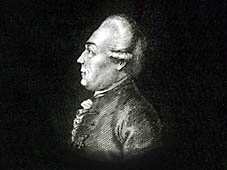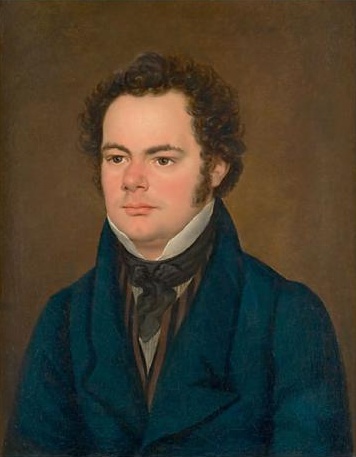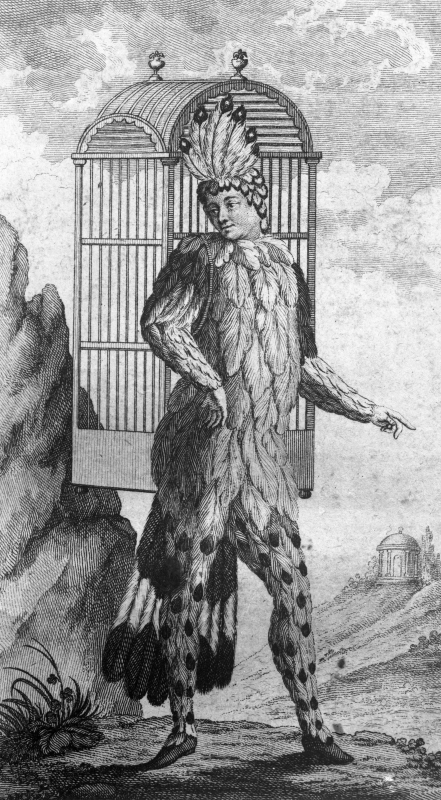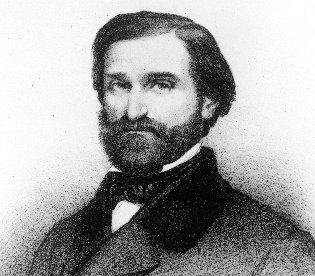|
Walther Ludwig (Sänger)
Walther Ludwig (17 March 1902 – 15 May 1981) was a German operatic lyric tenor, particularly associated with Mozart roles and Schubert lieder. Biography He was born on 17 March 1902 in Bad Oeynhausen. He first studied medicine in Freiburg before turning to voice studies in Königsberg, where he made his debut in 1928. He then sang in Schwerin, where he created the title role in Paul Graeners's ''Friedmann Bach'' in 1931. He joined the Städtische Oper Berlin in 1932, where he established himself in Mozart roles such as Belmonte, Don Ottavio, Tamino, Idomeneo, Ferrando, etc. After the war, he began appearing at the Hamburg State Opera, and made his debut at the Vienna State Opera in 1947 and at the Salzburg Festival in 1948. He also made guest appearances at La Scala in Milan, the Paris Opéra, the Royal Opera House in London, the Liceo in Barcelona. A stylish and musical lyric tenor, other notable roles included light Italian roles such as Nemorino, Ernesto, Duke of Man ... [...More Info...] [...Related Items...] OR: [Wikipedia] [Google] [Baidu] |
Lyric Tenor
A tenor is a type of male singing voice whose vocal range lies between the countertenor and baritone voice types. It is the highest male chest voice type. Composers typically write music for this voice in the range from the second B below middle C to the G above middle C (i.e. B2 to G4) in choral music, and from the second B flat below middle C to the C above middle C (B2 to C5) in operatic music, but the range can extend at either end. Subtypes of tenor include the ''leggero'' tenor, lyric tenor, spinto tenor, dramatic tenor, heldentenor, and tenor buffo or . History The name "tenor" derives from the Latin word '' tenere'', which means "to hold". As noted in the "Tenor" article at ''Grove Music Online'': In polyphony between about 1250 and 1500, the enor was thestructurally fundamental (or 'holding') voice, vocal or instrumental; by the 15th century it came to signify the male voice that sang such parts. All other voices were normally calculated in relation to the teno ... [...More Info...] [...Related Items...] OR: [Wikipedia] [Google] [Baidu] |
Royal Opera House
The Royal Opera House (ROH) is a theatre in Covent Garden, central London. The building is often referred to as simply Covent Garden, after a previous use of the site. The ROH is the main home of The Royal Opera, The Royal Ballet, and the Orchestra of the Royal Opera House (now known collectively as the Royal Ballet and Opera). The first theatre on the site, the Theatre Royal (1732), served primarily as a playhouse for the first hundred years of its history. In 1734, the first ballet was presented. A year later, the first season of operas, by George Frideric Handel, began. Many of his operas and oratorios were specifically written for Covent Garden and had their premieres there. The current building is the third theatre on the site, following disastrous fires in 1808 and 1856 to previous buildings. The façade, foyer, and auditorium date from 1858, but almost every other element of the present complex dates from an extensive reconstruction in the 1990s. The main auditorium ... [...More Info...] [...Related Items...] OR: [Wikipedia] [Google] [Baidu] |
Verdi Requiem
The ''Messa da Requiem'' is a musical setting of the Catholic funeral mass (Requiem) for four soloists, double choir and orchestra by Giuseppe Verdi. It was composed in memory of Alessandro Manzoni, whom Verdi admired, and therefore also referred to as the ''Manzoni Requiem''. The first performance, at the San Marco church in Milan on 22 May 1874, conducted by the composer, marked the first anniversary of Manzoni's death. It was followed three days later by the same performers at La Scala. Verdi conducted his work at major venues in Europe. Verdi composed the last part of the text, ''Libera me'', first, as his contribution to the '' Messa per Rossini'' that he had begun after Gioachino Rossini had died, already contained the music that later begins the ''Dies irae'' sequence. Considered too operatic to be performed in a liturgical setting, the Requiem is usually given in concert form; it takes around 90 minutes to perform. Musicologist David Rosen calls it "probably the most fre ... [...More Info...] [...Related Items...] OR: [Wikipedia] [Google] [Baidu] |
Die Schöpfung
''The Creation'' () is an oratorio written in 1797 and 1798 by Joseph Haydn ( Hob. XXI:2), and considered by many to be one of his masterpieces. The oratorio depicts and celebrates the creation of the world as narrated in the Book of Genesis. The libretto was written by Gottfried van Swieten. The work is structured in three parts and scored for soprano, tenor and bass soloists, chorus and a symphonic orchestra. In parts I and II, depicting the creation, the soloists represent the archangels Raphael (bass), Uriel (tenor) and Gabriel (soprano). In part III, the bass and soprano represent Adam and Eve. The first public performance was held in Vienna at the old Burgtheater on 19 March 1799. The oratorio was published with the text in German and English in 1800. Inspiration Haydn was inspired to write a large oratorio during his visits to England in 1791–1792 and 1794–1795 when, alongside his close friend English music historian Charles Burney, he heard oratorios of George Fr ... [...More Info...] [...Related Items...] OR: [Wikipedia] [Google] [Baidu] |
Die Schöne Müllerin
' (,"The Fair Maid of the Mill", Op. 25, D. 795), is a song cycle by Franz Schubert from 1823 based on 20 poems by Wilhelm Müller. It is the first of Schubert's two seminal cycles (preceding ''Winterreise'')'','' and a pinnacle of ''Lied'' repertoire. ''Die schöne Müllerin'' is performed by a pianist and a solo singer. The vocal part falls in the range of a tenor or soprano voice, but is often sung by other voices, transposed to a lower range, a precedent established by Schubert himself. Since the protagonist is a young man, performances by women's voices are less common. The piano part bears much of the expressive burden of the work, and is only seldom a mere 'accompaniment' to the singer. A typical performance lasts around sixty to seventy minutes. Composition Müller published twenty-five poems in the first fascicule (1821) of ''Sieben und siebzig Gedichten aus den nachgelassenen Papieren eines reisenden Waldhornisten'' (Seventy-seven Poems from the Posthumous Papers of ... [...More Info...] [...Related Items...] OR: [Wikipedia] [Google] [Baidu] |
Zar Und Zimmermann
''Zar und Zimmermann'' (''Tsar and Carpenter'') is a comic opera in three acts, music by Albert Lortzing, libretto by the composer after Georg Christian Römer's ''Der Bürgermeister von Saardam, oder Die zwei Peter'', itself based on the French play ''Le Bourgmestre de Saardam, ou Les deux Pierre'' by Mélésville, Jean-Toussaint Merle, and Eugène Centiran de Boirie. Ultimately, it goes back to the historical Grand Embassy of Peter the Great. Gaetano Donizetti had set the same story in his 1827 opera '' Il borgomastro di Saardam''. Performance history The opera was first performed at the Stadttheater in Leipzig, on 22 December 1837. Lortzing's most successful and enduring work, it is still regularly performed in German-speaking countries. Roles Synopsis The action takes place in Saardam, Holland, in 1698. Peter the Great of Russia, disguised as Peter Michaelov, a common laborer, is working in a shipyard in the Dutch town of Saardam, to learn shipbuilding techniques fo ... [...More Info...] [...Related Items...] OR: [Wikipedia] [Google] [Baidu] |
Die Lustigen Weiber Von Windsor
''Die lustigen Weiber von Windsor'', or ''The Merry Wives of Windsor'', is an 1849 opera in three acts by Otto Nicolai to a German libretto by Salomon Hermann Mosenthal based on Shakespeare's play. Published as a comical-fantastical work in three acts with dance ''(komisch-phantastische Oper in 3 Akten mit Tanz)'', its structure is musical numbers linked by spoken dialogue, harkening back to the then-outmoded ''Singspiel'' format. It remains popular in Germany and Austria and its overture is sometimes heard in concert in other countries. Composition history Nicolai wrote most of the music in 1845 and 1846 but was able to adjust the score in 1849 just before the work's delayed premiere. He had earlier won success with four Italian melodramatic operas, viz. ''Rosmonda d’Inghilterra, Gildippe ed Odoardo, Il templario'' and ''Il proscritto'', the last of which he revised to a German libretto as ''Die Heimkehr des Verbannten'', to additional acclaim, in 1843, leading to his attenti ... [...More Info...] [...Related Items...] OR: [Wikipedia] [Google] [Baidu] |
Die Zauberflöte
''The Magic Flute'' (, ), K. 620, is an opera in two acts by Wolfgang Amadeus Mozart to a German libretto by Emanuel Schikaneder. It is a ''Singspiel'', a popular form that included both singing and spoken dialogue. The work premiered on 30 September 1791 at Schikaneder's theatre, the Freihaus-Theater auf der Wieden in Vienna, just two months before Mozart's death. It was Mozart's last opera. It was an outstanding success from its first performances, and remains a staple of the opera repertory. In the opera the Queen of the Night persuades Prince Tamino to rescue her daughter Pamina from captivity under the high priest Sarastro; instead, he learns the high ideals of Sarastro's community and seeks to join it. Separately, then together, Tamino and Pamina undergo severe trials of initiation, which end in triumph, with the Queen and her cohorts vanquished. The earthy Papageno, who accompanies Tamino on his quest, fails the trials completely but is rewarded anyway with the ... [...More Info...] [...Related Items...] OR: [Wikipedia] [Google] [Baidu] |
Die Entführung Aus Dem Serail
' () (Köchel catalogue, K. 384; ''The Abduction from the Seraglio''; also known as ') is a singspiel in three acts by Wolfgang Amadeus Mozart. The German libretto is by Gottlieb Stephanie, based on Christoph Friedrich Bretzner's . The plot concerns the attempt of the hero Belmonte, assisted by his servant Pedrillo, to rescue his beloved Constanze from the seraglio of Pasha Selim. The work premiered on 16 July 1782 at the Vienna Burgtheater, with the composer conducting. Origins The opera loosely refers to the practice of the North African Barbary corsairs, who operated primarily in the western Mediterranean, of hijacking ships belonging to Christian states. Under the pretext of jihad, the ship and cargo were sold or returned only after a ransom was paid. The actual goal, however, was the kidnapping of crew and passengers, to extort ransom money or to sell them into slavery. It was also common to force affected seafaring nations of non-Muslim faith to pay protection money or tribut ... [...More Info...] [...Related Items...] OR: [Wikipedia] [Google] [Baidu] |
Mignon
''Mignon'' () is an 1866 ''opéra comique'' (or opera in its second version) in three acts by Ambroise Thomas. The original French libretto was by Jules Barbier and Michel Carré, based on Goethe's 1795-96 novel '' Wilhelm Meisters Lehrjahre''. The Italian version was translated by Giuseppe Zaffira. The opera is mentioned in James Joyce's " The Dead" (in ''Dubliners'') and Willa Cather's '' The Professor's House''. Thomas's goddaughter Mignon Nevada was named after the main character. The aria “I am Titania” was used repeatedly in the British feature film “The Life and Death of Colonel Blimp”. Performance history The first performance was at the Opéra-Comique in Paris on 17 November 1866. The piece proved popular: more than 100 performances took place by the following July, the 1,000th was given there on 13 May 1894, and the 1,500th on 25 May 1919. The opera was also adapted and translated into German for performance in Berlin with Madame Lucca as Mignon. Lucca was ... [...More Info...] [...Related Items...] OR: [Wikipedia] [Google] [Baidu] |
Rigoletto
''Rigoletto'' is an opera in three acts by Giuseppe Verdi. The Italian libretto was written by Francesco Maria Piave based on the 1832 play '' Le roi s'amuse'' by Victor Hugo. Despite serious initial problems with the Austrian censors who had control over northern Italian theatres at the time, the opera had a triumphant premiere at La Fenice in Venice on 11 March 1851. The work, Verdi's sixteenth in the genre, is widely considered to be the first of the operatic masterpieces of Verdi's middle-to-late career. Its tragic story revolves around the licentious Duke of Mantua, his hunch-backed court jester Rigoletto, and Rigoletto's daughter Gilda. The opera's original title, ''La maledizione'' (The Curse), refers to a curse placed on both the Duke and Rigoletto by the Count Monterone, whose daughter the Duke has seduced with Rigoletto's encouragement. The curse comes to fruition when Gilda falls in love with the Duke and sacrifices her life to save him from the assassin hired by he ... [...More Info...] [...Related Items...] OR: [Wikipedia] [Google] [Baidu] |





